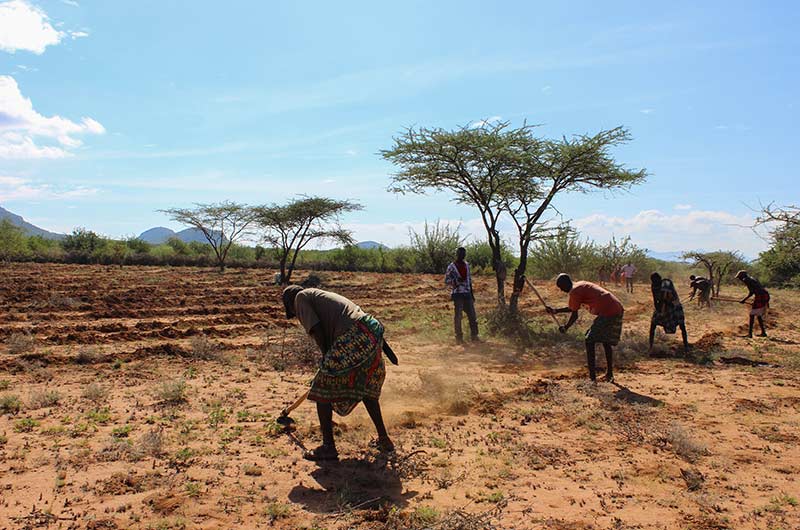LandPKS Learning
Knowledge Hub

The Role of LandPKS for Wildlife Conservation
In Kenya, the Land Potential Knowledge System has been providing a valuable tool to help land managers, researchers, and rangeland managers effectively conserve and restore biodiversity.
Protected areas cover nearly 13% of the earth’s surface, illustrating the critical importance of conserving biodiversity globally (Barua et al. 2013). However, wildlife habitat is not confined to protected areas and many wildlife species live and migrate in landscapes dominated by humans (Nyamwamu et al. 2015). Thus, not only is effective protected area management important for conservation, but also maintaining human-dominated landscapes that can still function as wildlife habitat. The East African country of Kenya is world renowned for its wildlife, with over 10% of the land in national parks and much more in community-managed wildlife conservancies (Western et al. 2015).
In Kenya, the Land Potential Knowledge System (LandPKS) has been providing a valuable tool to help land managers, researchers, and rangeland managers effectively conserve and restore biodiversity. LandPKS is a free, open source, mobile app that provides users with information about the potential of their land, including identifying the soil type and monitoring vegetation growth or degradation. Using the Land Cover module, a user can track changes in vegetation cover, including the restoration of important fodder species for both livestock and wildlife, as well as monitor the abundance of invasive, destructive plant species. The LandPKS app makes monitoring important areas for both wildlife and livestock easy and convenient, with instant results delivered directly to the user’s phone.
Managing land more effectively for wildlife also means managing land more effectively for communities that also rely on the same land for their livelihoods. LandPKS can help identify areas that are more suitable for rangeland, agriculture, wildlife conservation, and other uses. Matching land with suitable land-uses is critical for natural resource governance because it helps promote sustainable conservation and livelihoods simultaneously. Further, matching a land use to a suitable area will increase the ability of communities, and wildlife, to adapt to changing environmental conditions, such as increased drought frequency and severity. Further, in mixed-use areas of Kenya, such as the case study below, maximizing fodder species, and reducing undesirable species has benefits for both wildlife and livestock.
In the Laikipia and Samburu Counties in Kenya, complex historical land tenure systems have resulted in a patchwork of private ranches, community-owned conservancies, and open rangeland. Here, rangeland degradation manifests itself through increased bare ground and replacement of perennial grasses by undesirable species, such as Acacia reficiens. LandPKS is being used here to help assess the success of invasive species control methods. LandInfo was used to describe selected treatment sites, and provided data for biophysical matching with control sites. LandCover was then used to collect data on various vegetation metrics. Using LandPKS in Westgate and Kalama Conservancies helped to identify, match, and assess treatment and control plots for large-scale mechanical clearing of unwanted species and reseeding projects. This type of vegetation restoration benefits livestock and wildlife, and can help conserve critical biodiversity. LandPKS is one potential tool that can contribute to wildlife conservation, as well as effective natural resource governance and land use planning.
Works cited:
Barua, M., Bhagwat, S. A., & Jadhav, S. (2013). The hidden dimensions of human-wildlife conflict: health impacts, opportunity and transaction costs. Biological Conservation, 157, 309-316.
Nyamwamu, R.O., Mwangi, J. G., & Ombati, J. M. (2015). Untapped potential of wildlife agricultural extension mitigation strategies in influencing the extent of human-wildlife conflict: a case of smallholder agro-pastoralist in Laikipia County, Kenya. International Journal of Agricultural Extension, 3(1), 73-81.
Western, D., Waithaka, J., & Kamanga, J. (2015). Finding space for wildlife beyond national parks and reducing conflict through community-based conservation: the Kenya experiences. Parks, 21(1).
Mobile App | Data Portal | Knowledge Hub | Habitat Hub | Learning Collections | Blog | About | Contact | Support



